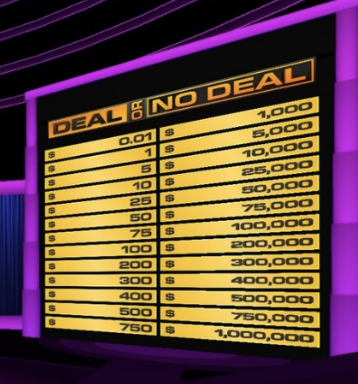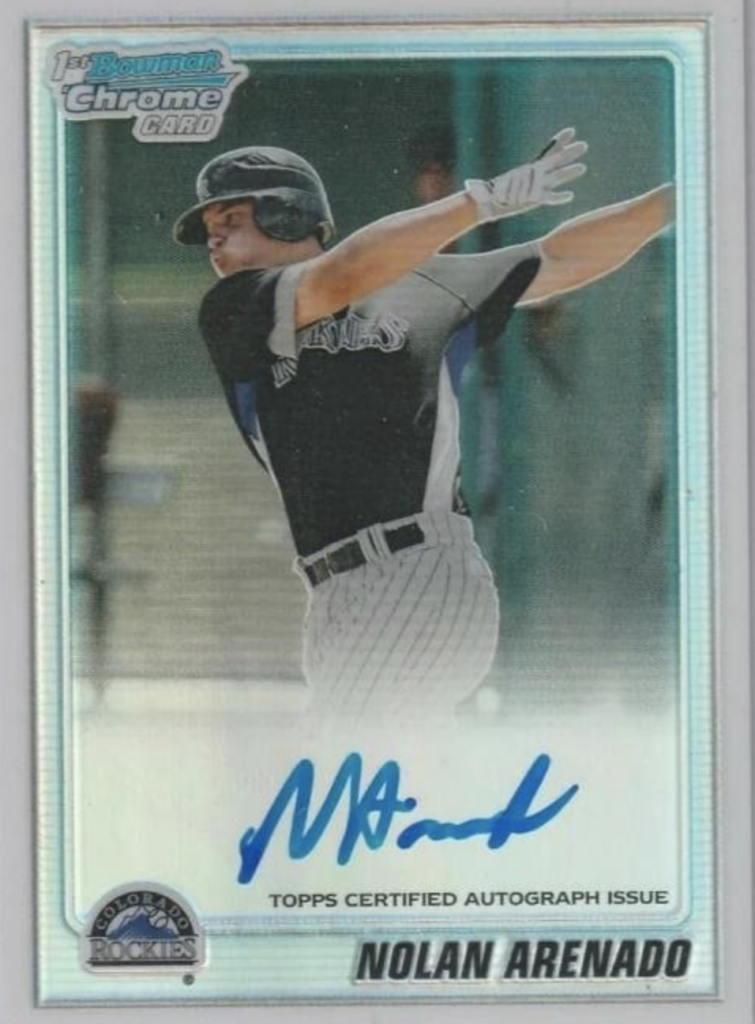
Art of the Steal: Due Diligence to Establish Your Price
This guest post came through our Article Submission Program. Thoughts and opinions are those of the author.
“We cannot negotiate with people who say what’s mine is mine and what’s yours is negotiable.” – John F. Kennedy
Negotiating is a timeless phenomenon. We negotiate every day; whether that be with family, friends, coworkers, or, most commonly, with ourselves. Every decision we make has an opportunity cost, and a certain degree of deliberation takes place before it is made. Whether done subconsciously or resolved in a high-octane discussion, we go through a process to arrive at a choice. Negotiating can start harmlessly, but result in hurt feelings, loss, and general poor decision-making. You may remember deciding to purchase a player’s card and then having buyer’s remorse. Why did you decide to make the purchase? Further, how did you convince another person to be a part of the transaction? Is there a specific process you should go through in making these decisions? These are questions that should be considered before coming to the negotiation table. There is plenty of work to be done before going on the prowl for your next purchase or deciding to put up a card for offers.
The John F. Kennedy quote above is a reminder that you have to give up value to get value. It can be difficult to put yourself in another person’s shoes, but it is what you must do to become a master negotiator. When constructing a hypothetical offer, consider why on earth the other person would agree to your deal. It is important to remove biases and other impeding distractions to come up with a price that is reasonable and fair. The ultimate goal should not be to rip others off or come away with a steal. You will complete more successful transactions and generally be a better person to transact with if you approach the deal from a holistic perspective. Hear me: there is nothing wrong with getting a steal, but that should not be your overall goal in every transaction you try to swing. On the other side of the pendulum, many market participants are worried about being ripped off. The best way to mitigate being swindled is to do your due diligence, which includes constructing your valuation of the commodity.
How much are you willing to lose? That question should be your starting point. Not only can a card’s value drop staggeringly in a matter of one public announcement, it can also become highly illiquid as time passes. Once you have established what you can afford to risk, it is time to begin the research phase. There are various tools out there, including Geoff’s new creation, that can assist with this time-consuming process. You need to remember that your time should be worth something to you and perfecting your research process to increase efficiency should be a peripheral objective. The discoveries to obtain in your research are identifying the appropriate player and determining your price points that will set up your contribution to the bargaining zone. You can peruse plenty of player valuation content by looking at their historical data, scouting reports, or other articles on the topic. The bargaining zone is what the focus is here. The beginning of this process was to ascertain what you were willing to lose, which we will call your “bail price.” The seller will also have a “bail price.” Instead of the buyer’s concept of this walk away figure that is based on an amount willing to be lost, the seller should set a liquidating price they can stomach that revolves around a certain maximizing profit or minimizing loss goal. The middle ground between these two bail prices is the bargaining zone.

Additionally, the buyer and seller should each set a best-case scenario price that we will call the ‘bullseye price.’ You may be willing to spend up to a certain amount, but that does not obligate you to spend it all. As a seller, you could bear letting a card go for a given price, but that does not mean you should settle for that sale. There should be a threshold you are waiting for a buyer’s offer to cross or a ‘Hail Mary’ offer you are hoping for a seller to graciously accept. Another consideration is your BOOT. Your BOOT is the most crucial aspect to remember when negotiating. If you do not know your BOOT, or worse, if you do not have a BOOT, then you are coming to the table with zero leverage. What is a BOOT? It is your alternative to the item you are negotiating over. It is the Best Option Out There if you fail to come to a deal. Your alternative options as a buyer include the same version of the card from a different seller, a different version of the card, a different card altogether, or simply not spending at all. The seller’s BOOT involves other pending offers or future offers they would be abandoned if they were to accept, as well as simply keeping the card. Having a grasp on what these actually are before you negotiate should have a substantial bearing on whether you make a deal or not. The buyer or seller could have more leverage depending on which has the more attractive BOOT. A commendable BOOT is to be content with what you have, whether as the buyer or seller. If a deal falls through, you will still either have the money or the card. If you can decide ahead of time that the status quo is an acceptable result, then there is hardly a BOOT that can get a leg up on yours.
Example time – let’s say you are feeling spendy and are willing to drop up to $1,300 on a veteran player with some Hall of Fame potential. After some extensive research that involves rejecting Kris Bryant, Mookie Betts, and Joey Votto for various reasons, you land on Nolan Arenado. You are unbothered by his current spat with his own team, still love the glove, and have a feeling that the Rockies might be on to something with their mindset of ‘less is more’ when it comes to making moves. The next step is to conclude upon a specific card and its fair value based upon recent transactions. You use your favorite tool and discover only one helpful comparable for what you are looking for; a BGS 9.5 autographed refractor of his 2010 Bowman Chrome “1st” prospect card that sold for $1,150 a month ago. You think that price is more than reasonable and go forth with the following information in the bank: the bail price for your search is $1,300, your bullseye price is $1,150, and you will settle for nothing less than an Arenado beauty. Armed with this knowledge, you scour the market for a similar card for sale. You then find one on eBay for $1,500, buy it now or best offer. You salivate at this opportunity, as you consider it ripe for the pickin’. Now you must begin the negotiation dance with an initial offer in hopes of determining the seller’s bail price so that you can fully understand the zone below.
As the negotiating heats up, you must remember your BOOT and hold fast to your own bail price. This means having self-discipline and bailing if the bargaining zone does not fit to your liking. The goal is to extract the other party’s bail price and understand the bargaining zone. If you feel that the seller’s bail price exceeds yours, then there is no bargaining zone, to begin with, and you should take your BOOT and walk. Be wary of falling into the trap of buying a card just to buy a card or selling a card just to sell a card. The negotiation process, especially if done over and over again without results, may make you weary, and so you might settle for a less than a favorable deal. Other cards and other offers will come around. Having the patience to wait them out can be one of the most profitable avenues you take.
If you can derive an appropriate personal valuation of your prospective purchase and can be content with what follows, then you should feel confident in your investment, rather than feel like you are throwing at a dartboard. Disciplined negotiators put in the preparation work before coming to the negotiation table. They try to uncover all the pieces in play and think about the transaction from the other party’s viewpoint. Remember to establish your price points ahead of time, try your best to unravel the bargaining zone during the negotiating, and always stick with your bail price when things heat up. Negotiating is a fun skill to master. It will take practice and work, but you will start to realize all the less than optimal decisions you have made in the past. Do you know what you can begin to do with those decisions once they present themselves again? Give ‘em the boot.
Do you negotiate while making sports card investments? Have you ever really thought about this important topic while at your local shows or checking eBay?Tell us in the Comments below.
Ready to take your sports card investing to the next level? Join my Membership Program now for card picks, analytics, premium community access and much more!






